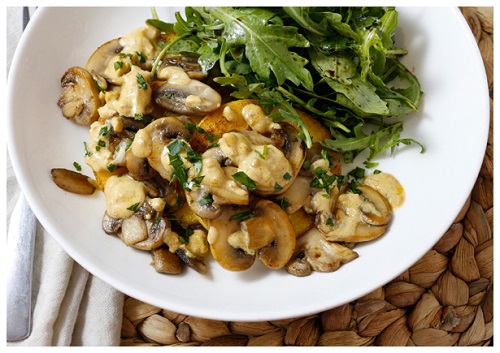vin·e·gar (noun): a condiment with a tart and tangy flavor that is an essential ingredient in every chef’s kitchen November 20, 2014
Vinegars are a diluted liquid of acetic acid formed through a fermentation process. Vinegars can be used in so many different ways when cooking; pickling, deglazing pans, marinating meats, making vinaigrettes or sauces, and even to sweeten certain desserts. While vinegar is known for its distinct flavor, it also has a long history of being used for its healing properties. Moreover, vinegars provide a healthy alternative to infusing food with flavor. It’s no wonder that vinegars are such a staple ingredient in the kitchen!
Health Benefits of Vinegar:
Increases absorption of nutrients: Since vinegar is high in acetic acid, it can help increase the body’s ability to absorb the essential minerals locked in foods. This can be especially useful to people who have a hard time getting all the calcium their bodies need to keep their bones strong.
Stabilizes blood sugars: Vinegar can help slow the absorption of sugar from a meal into the bloodstream and help prevent the blood sugar level from spiking. This is especially helpful for those with diabetes in better controlling their blood sugar levels.
Vinegar as a substitute: Vinegar can be used as a low calorie (contains only 25 calories in half a cup), yet flavorful substitute for fats and salts while still adding flavor and excitement to a variety of dishes. Instead of adding excess butter or salt, vinegars add a dash of zing to boring vegetables or work as a tangy marinade for tenderizing meat. Use balsamic vinegar to bring out the sweetness and flavor of strawberries without any added sugar. Additionally, when cooking with beans, adding a little vinegar near the end of cooking decreases the amount of salt needed to perk up the flavor of the beans.
Types of Vinegars:
Red Wine Vinegar: Red Wine Vinegar is made from red wine, which is fermented & aged until it turns sour. In general, the longer the vinegar ages, the smoother the flavors become. Red wine vinegar can be aged up to two years before bottling. Red wine vinegar can be used in salad dressings and sauces, pickling, slow food and cooked in reductions to make sauces.
White Wine Vinegar: White wine vinegar is made from white wine, which is fermented & aged as well. It is clear to pale gold in color, and has a lighter tangy flavor. White wine vinegar is often used to make Hollandaise and Béarnaise sauces, vinaigrettes, soups, and stews.
Balsamic Vinegar: Balsamic vinegar isn’t made from wine but is typically made from a reduction of cooked grape juice. This reduction is then fermented & aged in wooden barrels for a minimum of 12 years! The flavor intensifies over the years, becoming sweet and very concentrated. Balsamic vinegar is deep brown in color and has a rich complex flavor profile combining sweet and sour elements of the grape juice with hints of wood from the barrel-aging.
Look out for these upcoming recipes using vinegar from our fantastic supplier, Colavita:
Mushroom Ragu with Crispy Polenta Cake. Using Colavita Balsamic Vinegar
Spicy Steak and Brussels Sprout Stir-fry. Using Colavita Aged White Wine Vinegar
Roasted Pork Chop with Swiss chard and Sweet Potato Mash. Using Colavita Aged Red Wine Vinegar
What’s your favorite use of vinegar? Let us know in the comments, and you’ll be entered for a chance to win a bottle of Aged Balsamic Vinegar of Modena from Colavita!










